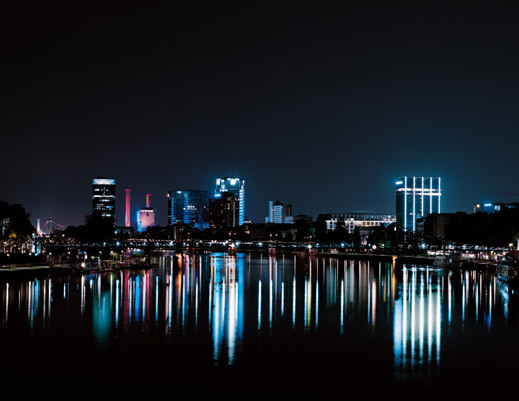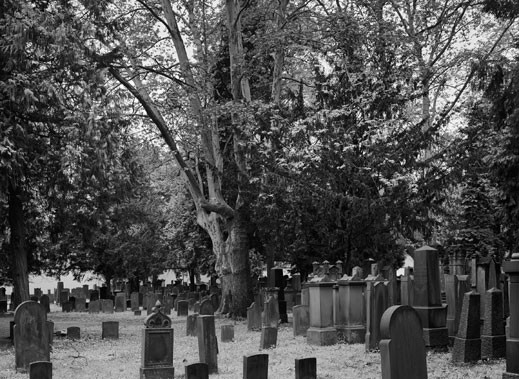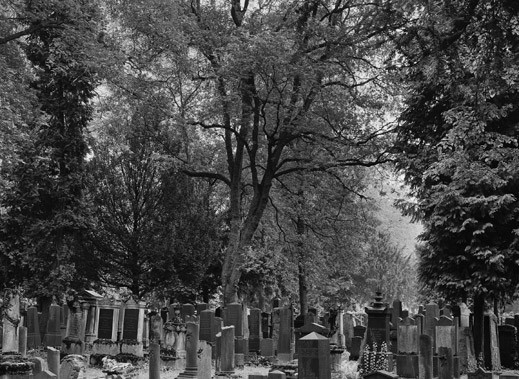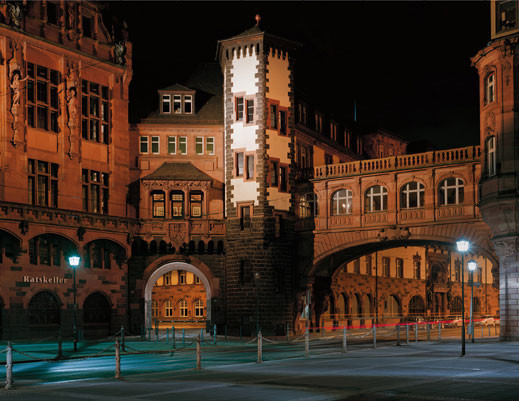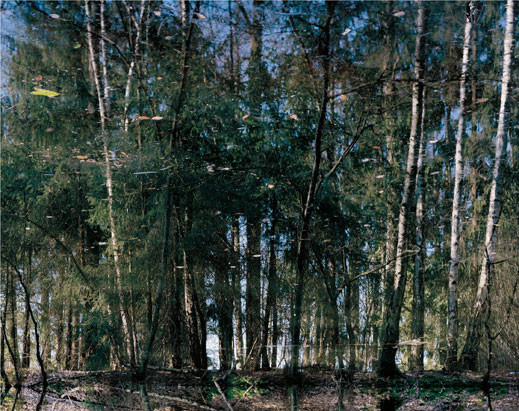AXEL HUETTE - FRANKFURT 2011 // EMETH
27 May - 23 Jul 2011
The show FRANKFURT 2011 // EMETH (in Hebrew EMETH stands for “truth“ - METH means “death“) at Galerie Wilma Tolksdorf presents recent works of Axel Huette made in Frankfurt. Axel Huette (*1951) is one of internationally most renowned fine art photographers. His works were shown in numerous outstanding institutions, such as MOCA Los Angeles, Solomon R. Guggenheim Museum, New York, Musée d'art moderne de la ville de Paris or Museo Nacional Centro de Arte Reina Sofía, Madrid. Photographs of Axel Huette are included in the collections of the most important museums of international modern and contemporary art.
The different works as a whole focus on the rapid changes of environmental reality, the alteration of urban and natural landscapes and the reception of the visible reality. In “Tableau Frankfurt am Main“, 2011 Axel Huette brings together postcards picturing the city before the 2nd World War with his own photographs of the present views of the city. By opposing images from different decades the artist hints us towards the diverse modes of representational images and the changes within the visual perception. Consequently and in an ironic way, Huette chooses the format of an overdimensioned postcard - an out-dated medium of mass communication in today‘s society.
The perfectly composed photographs of nighttime cityscapes integrated by Axel Huette feature the particular skyline of Frankfurt. Like all nighttime photographs of Axel Huette those pictures were taken with extremely long exposure time - also in details one can find the examination of the notion of time which reveals the hidden and focuses the perception.
The artificial lights illuminating the darkness in “Ratskeller”, 2011 create a shifting moment in the perception and constitute an irritating, magical atmosphere. Although the scene is deserted, or precisely because of the absence of people strong energy emanates from the image.
The works “Stadtwald-01” and “Stadtwald-02“ reveal similar pictorial quality. Only at the second glance one does recognize the motif of a trembling forest being reflected in a lake. Those photographs are poetic on various levels - they are a reflection of a reflection of a reflection.
Despite the strong motif of cemetery the gentle images of Huette capture the theme from an aesthetic angle; they avoid any topical drama and overdrawn emotionalism. The tombs are structurally completely embedded in the landscape and seem to be as naturally grown as the trees surrounding the scenery - the black-white photography underlines this homogeneous impression.
Axel Huette creates images capturing the mysterious character and the atmospheric spirit of urban landscapes. By choosing ditone print as technique for his images he enhances the aesthetic effect: the uncoated paper used in this case is more sensual through its matte surface which differs from the glossy c-prints we also know from Huette.
The different works as a whole focus on the rapid changes of environmental reality, the alteration of urban and natural landscapes and the reception of the visible reality. In “Tableau Frankfurt am Main“, 2011 Axel Huette brings together postcards picturing the city before the 2nd World War with his own photographs of the present views of the city. By opposing images from different decades the artist hints us towards the diverse modes of representational images and the changes within the visual perception. Consequently and in an ironic way, Huette chooses the format of an overdimensioned postcard - an out-dated medium of mass communication in today‘s society.
The perfectly composed photographs of nighttime cityscapes integrated by Axel Huette feature the particular skyline of Frankfurt. Like all nighttime photographs of Axel Huette those pictures were taken with extremely long exposure time - also in details one can find the examination of the notion of time which reveals the hidden and focuses the perception.
The artificial lights illuminating the darkness in “Ratskeller”, 2011 create a shifting moment in the perception and constitute an irritating, magical atmosphere. Although the scene is deserted, or precisely because of the absence of people strong energy emanates from the image.
The works “Stadtwald-01” and “Stadtwald-02“ reveal similar pictorial quality. Only at the second glance one does recognize the motif of a trembling forest being reflected in a lake. Those photographs are poetic on various levels - they are a reflection of a reflection of a reflection.
Despite the strong motif of cemetery the gentle images of Huette capture the theme from an aesthetic angle; they avoid any topical drama and overdrawn emotionalism. The tombs are structurally completely embedded in the landscape and seem to be as naturally grown as the trees surrounding the scenery - the black-white photography underlines this homogeneous impression.
Axel Huette creates images capturing the mysterious character and the atmospheric spirit of urban landscapes. By choosing ditone print as technique for his images he enhances the aesthetic effect: the uncoated paper used in this case is more sensual through its matte surface which differs from the glossy c-prints we also know from Huette.

